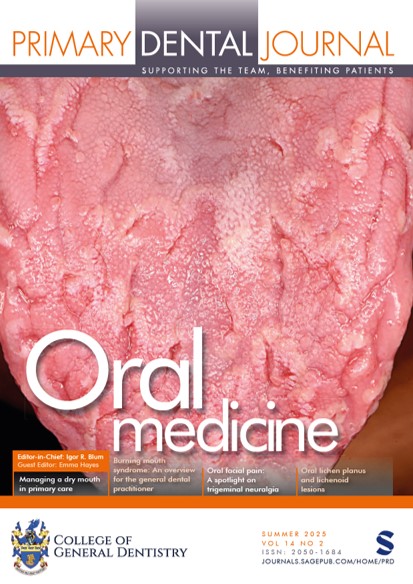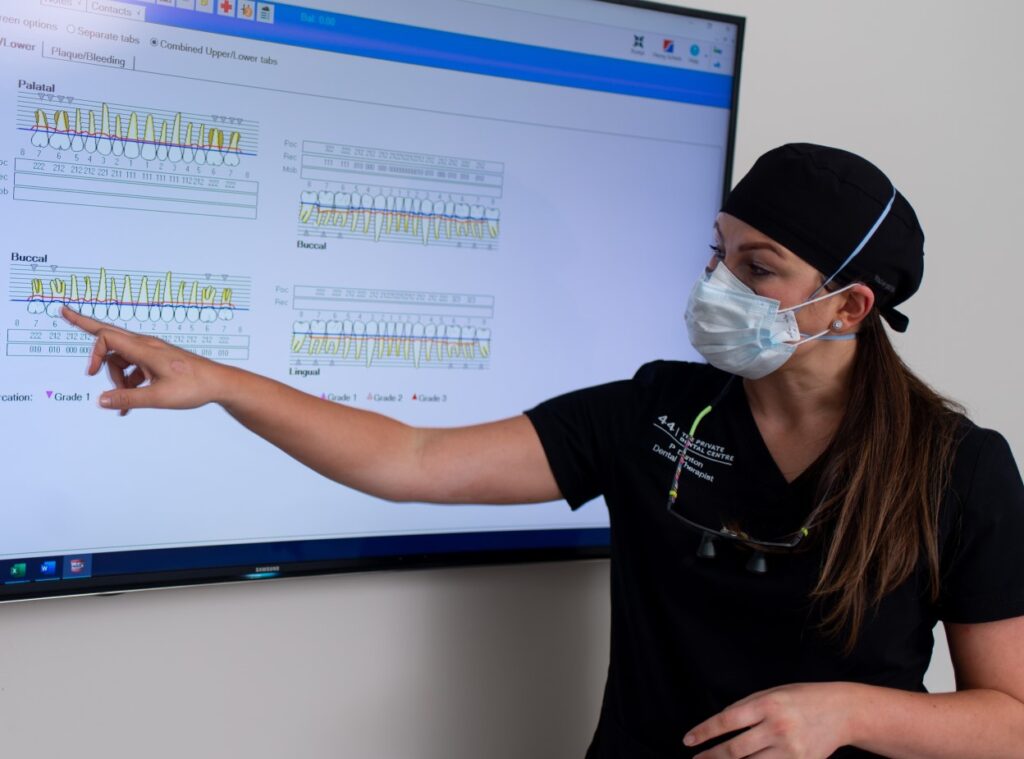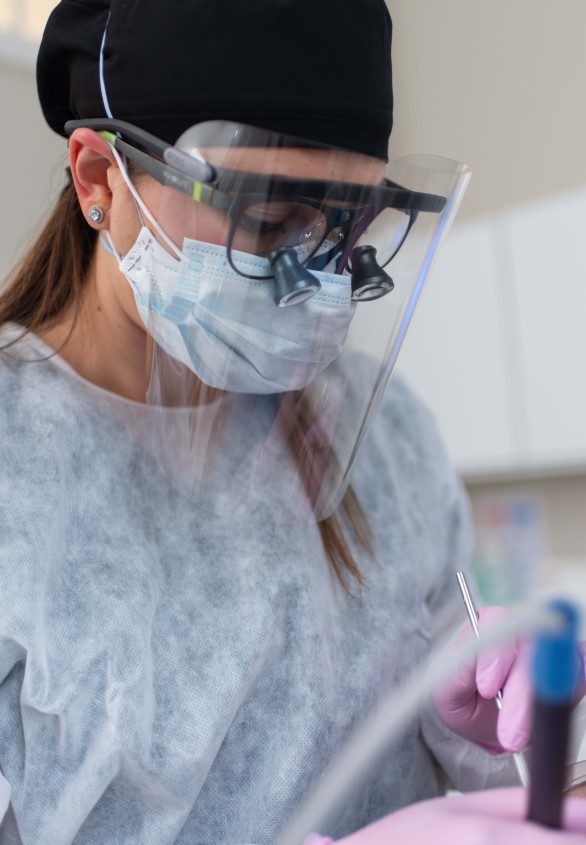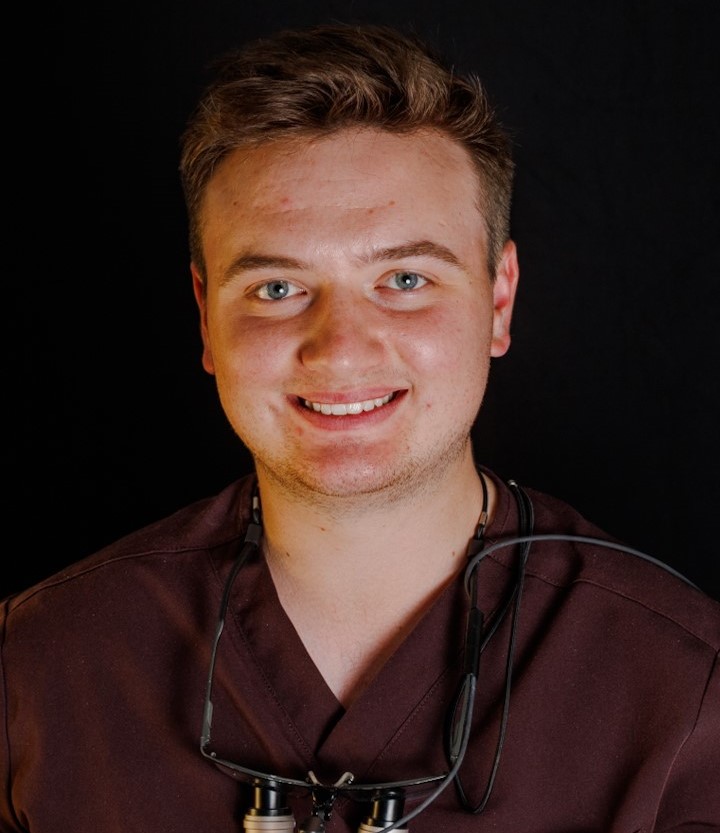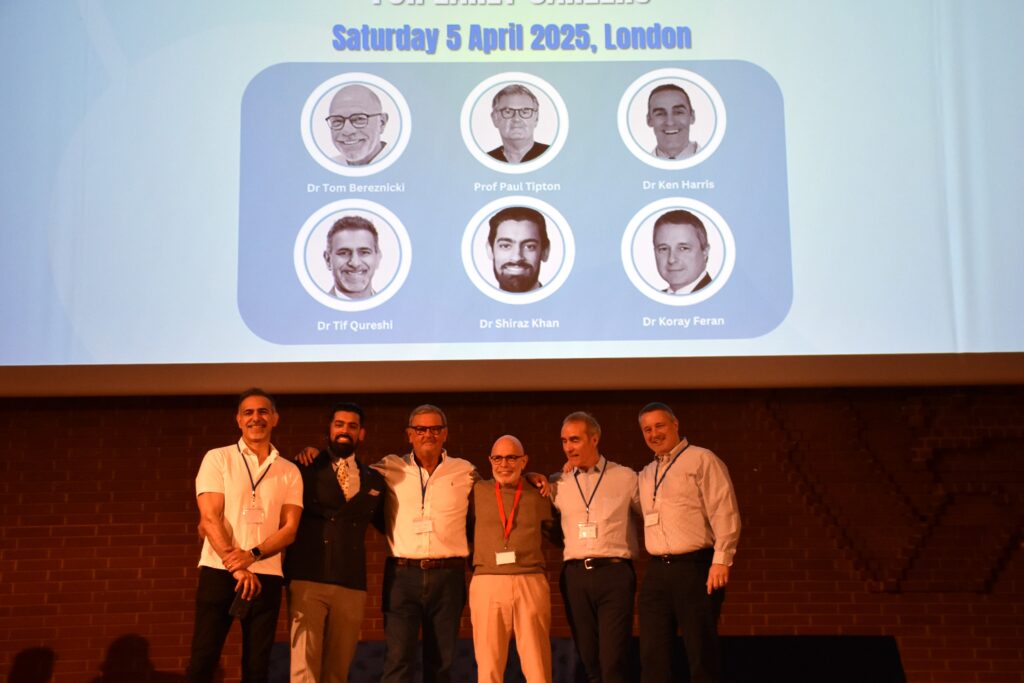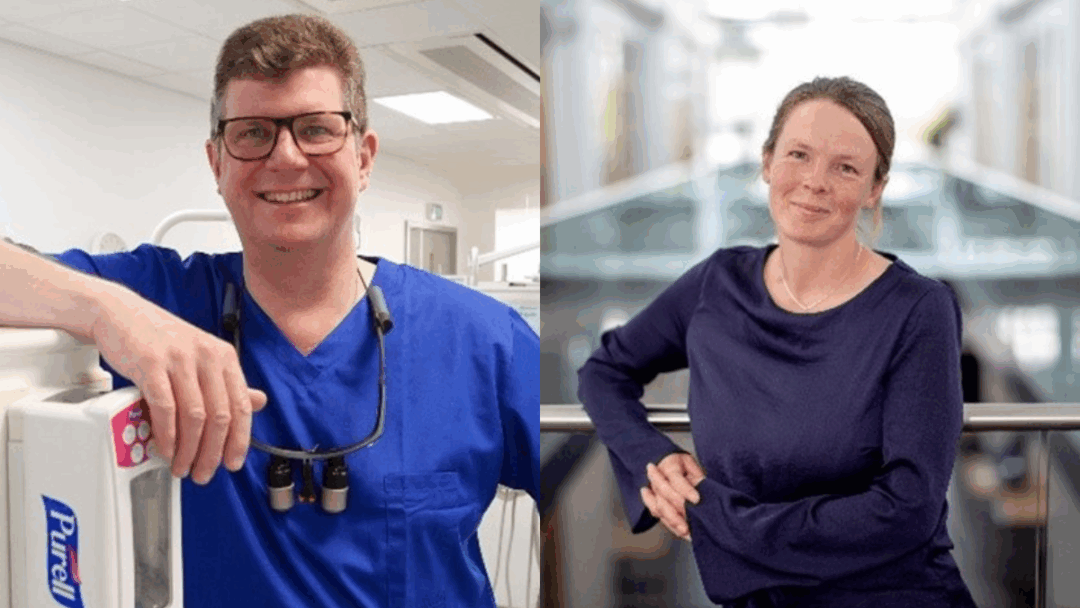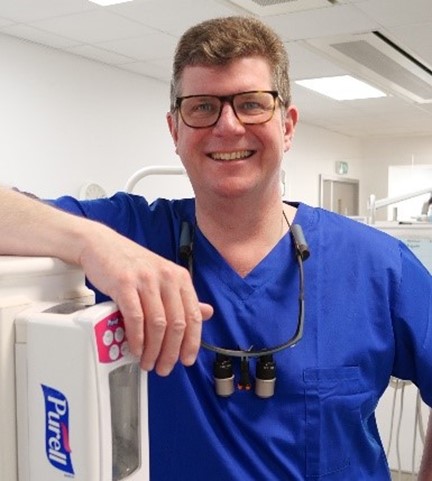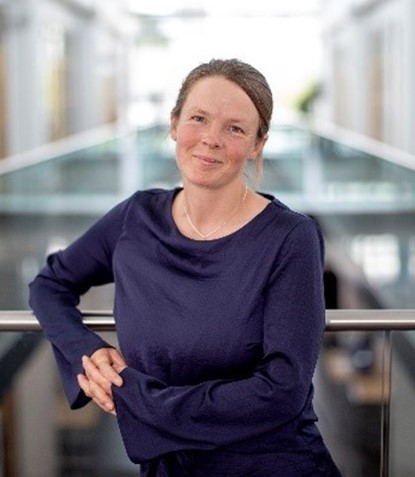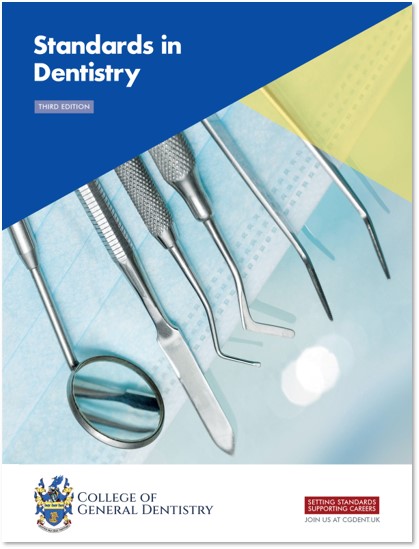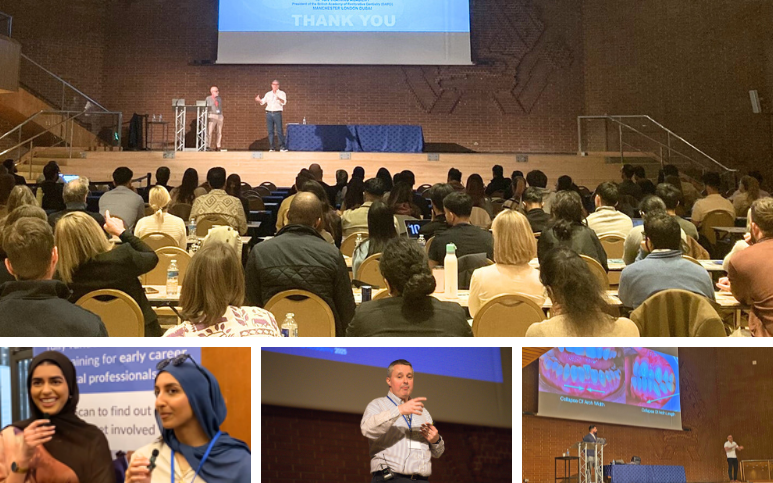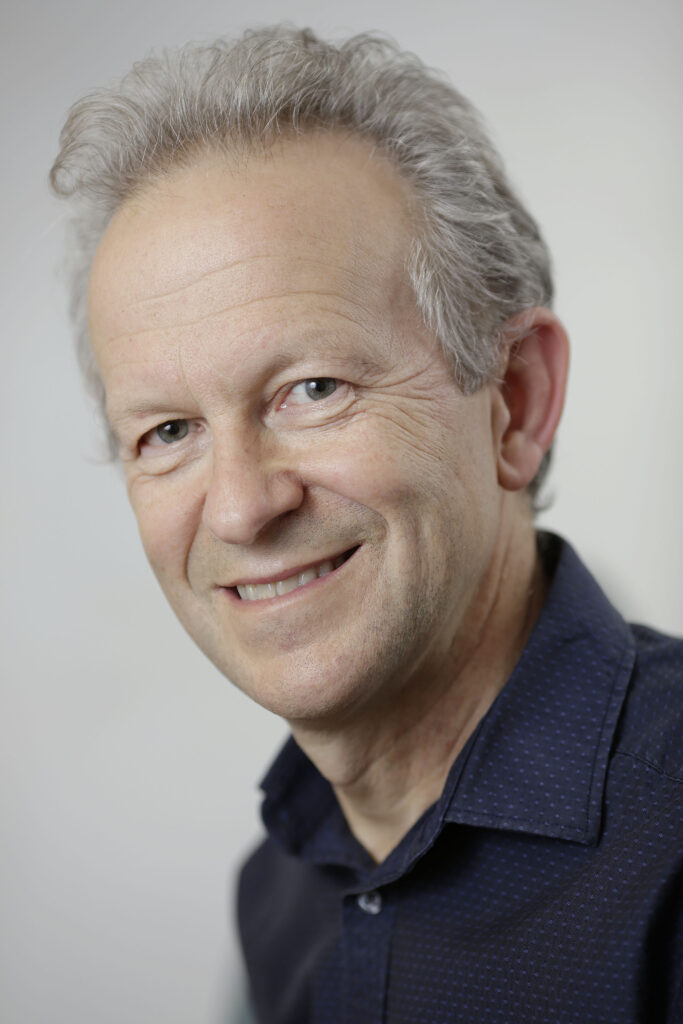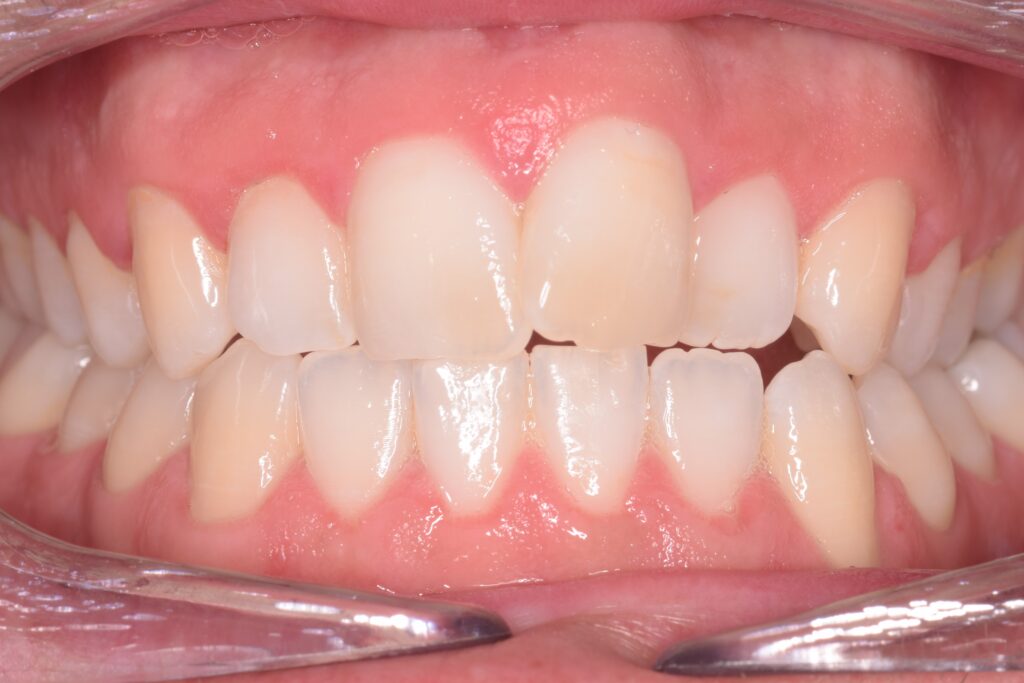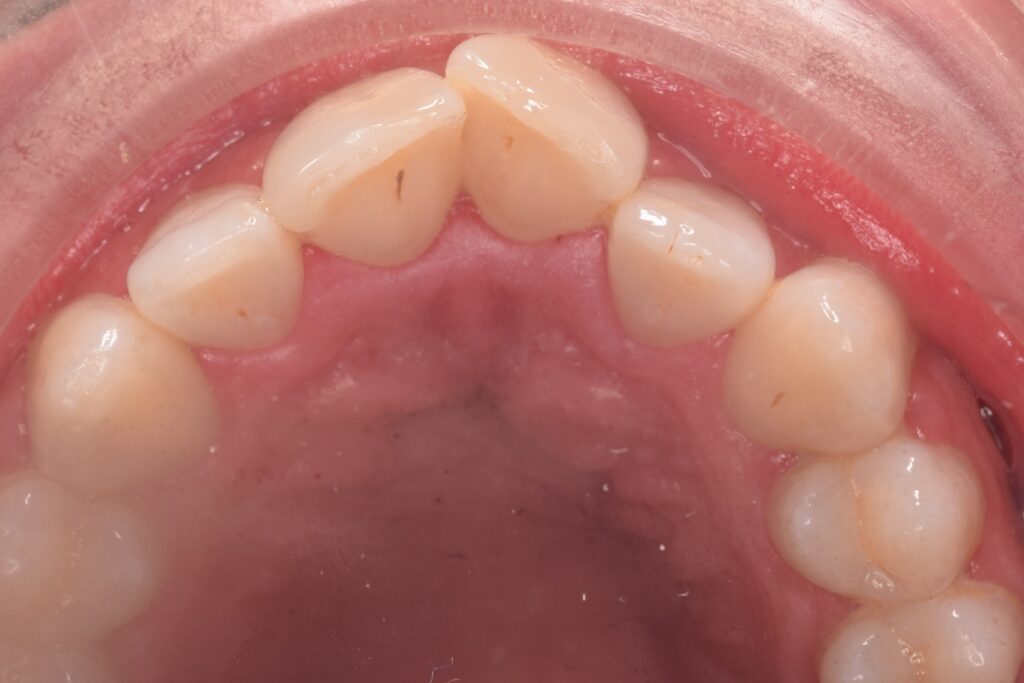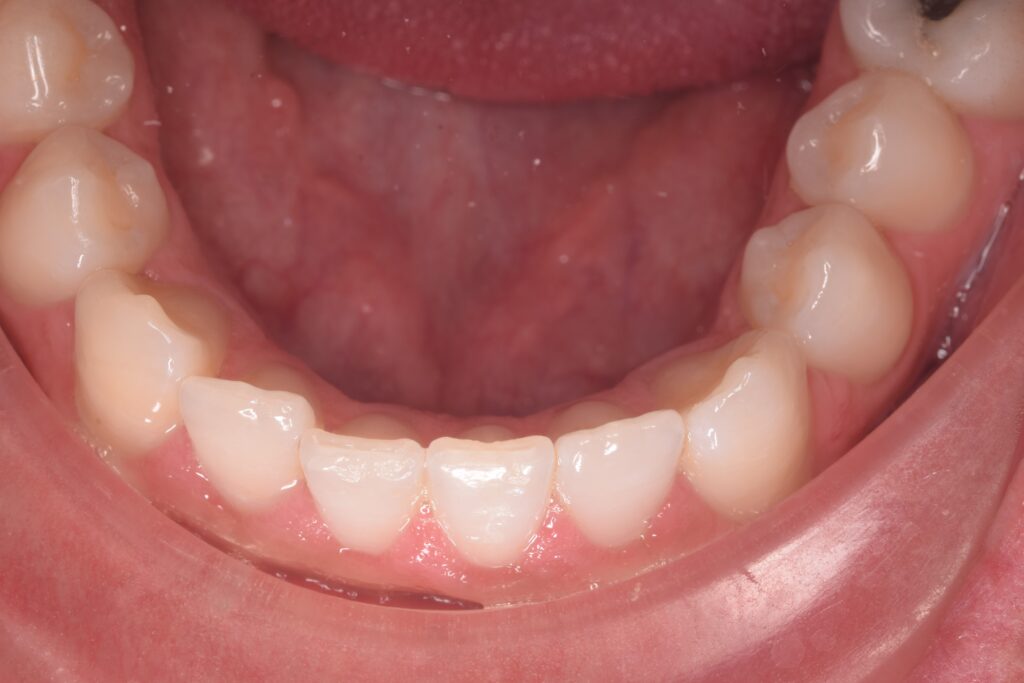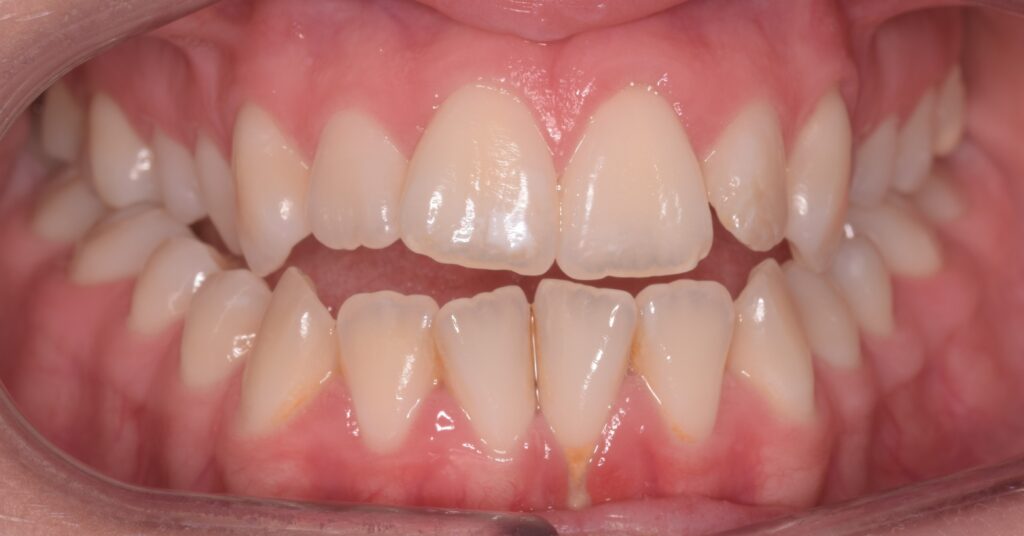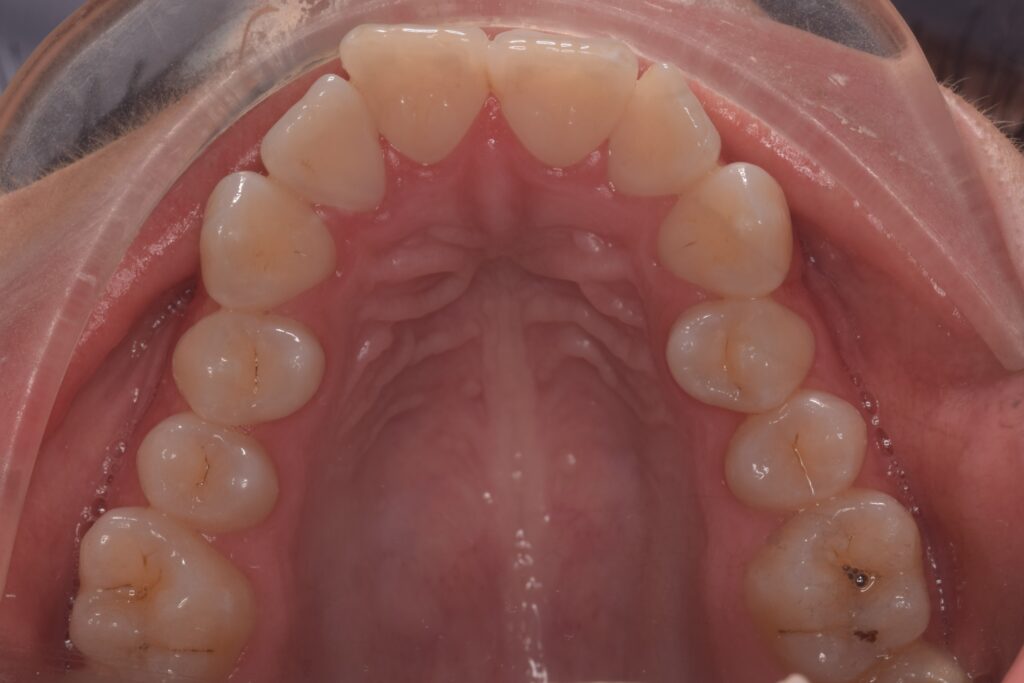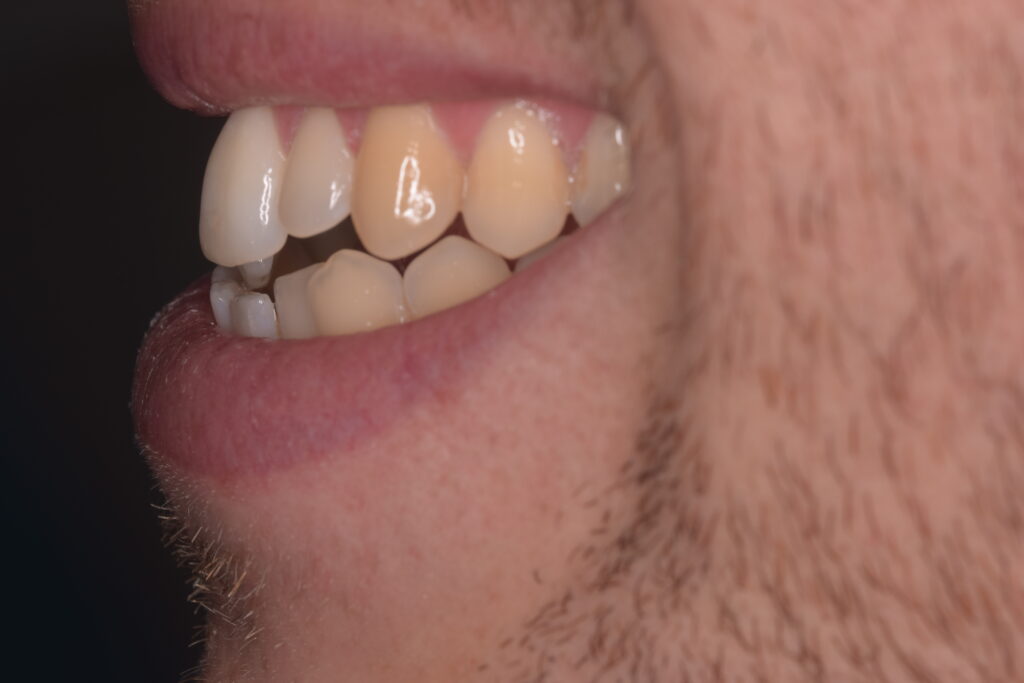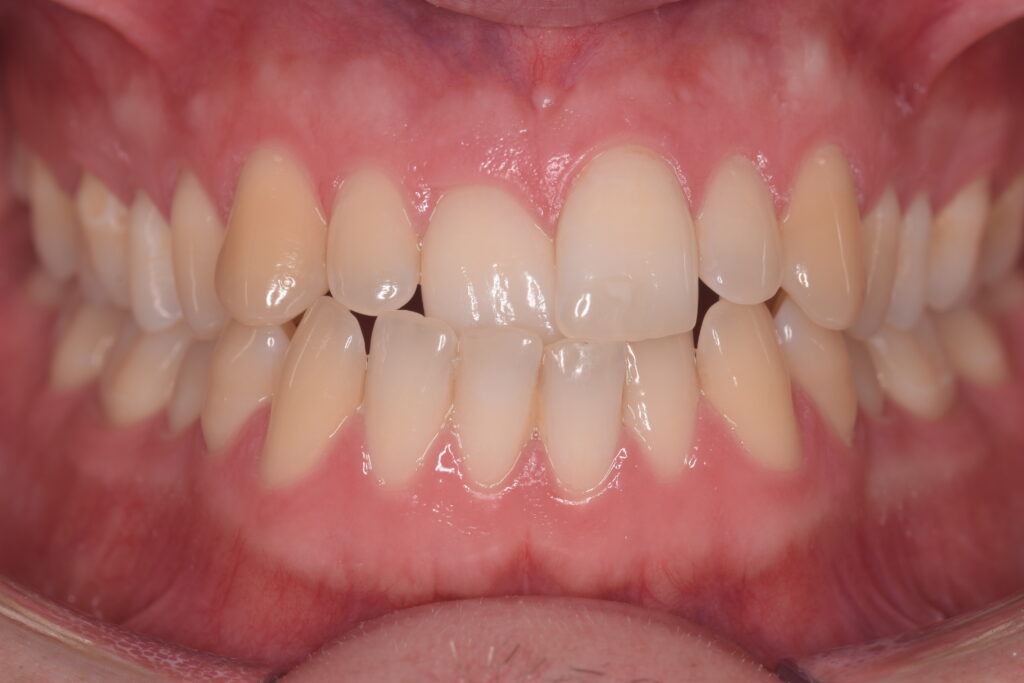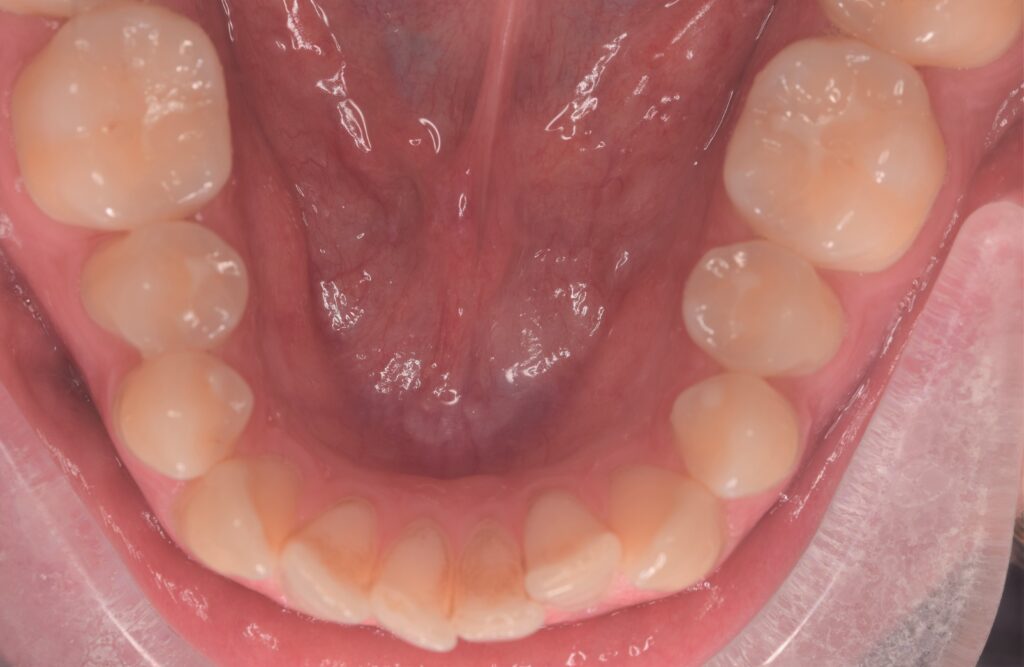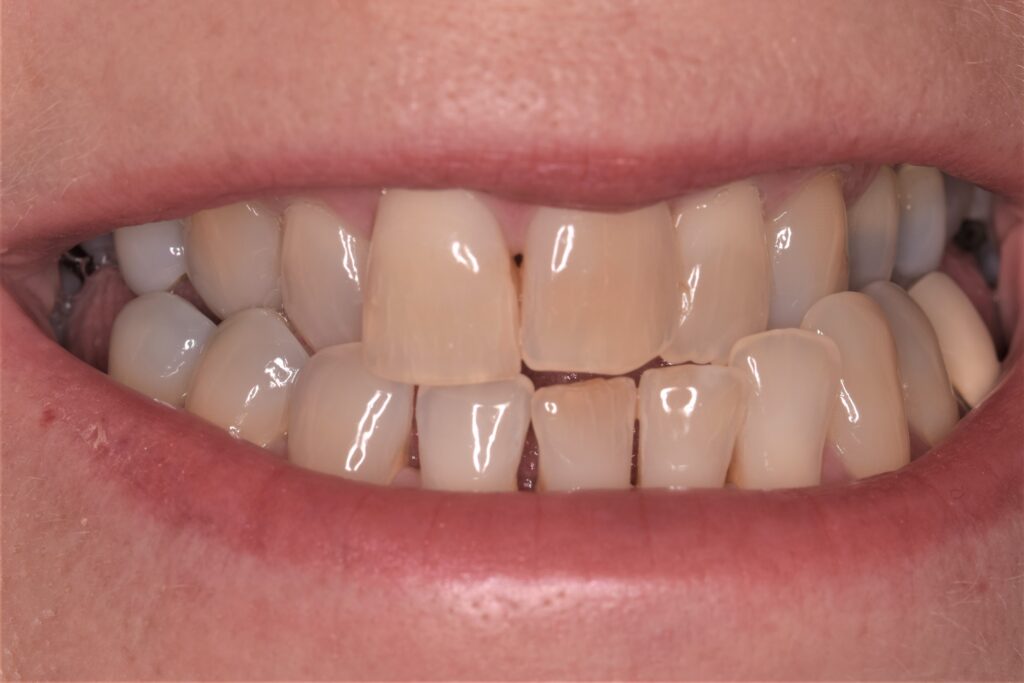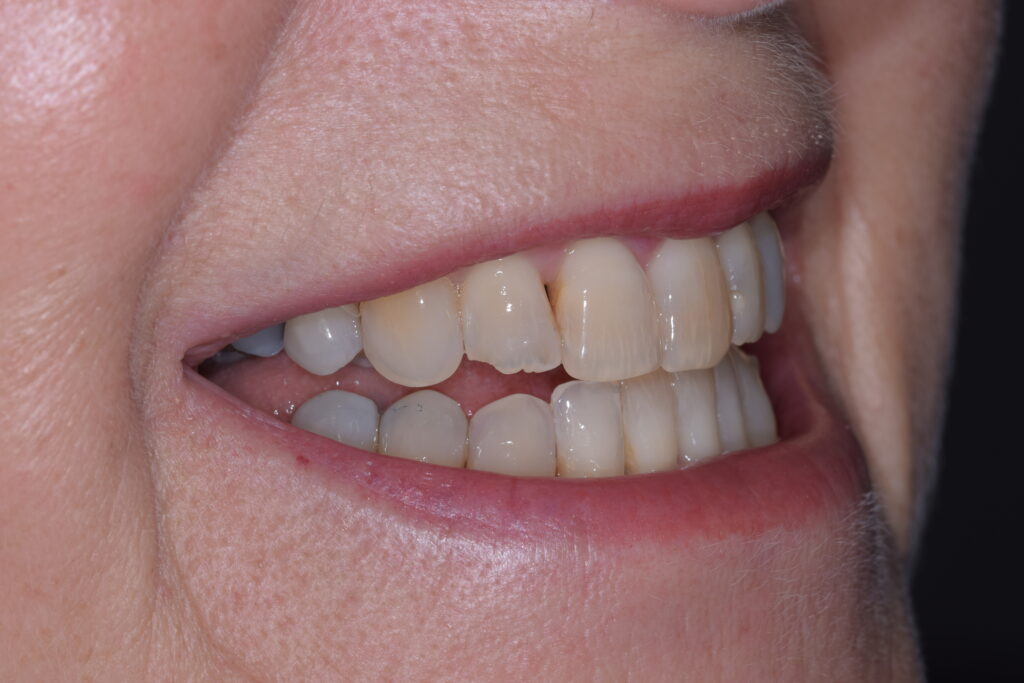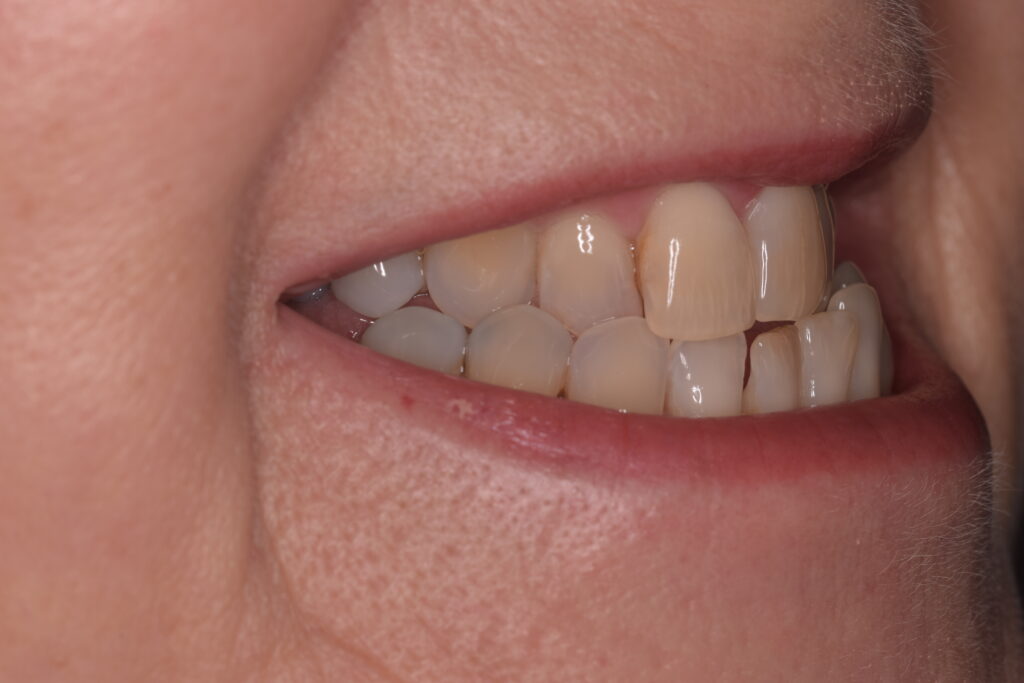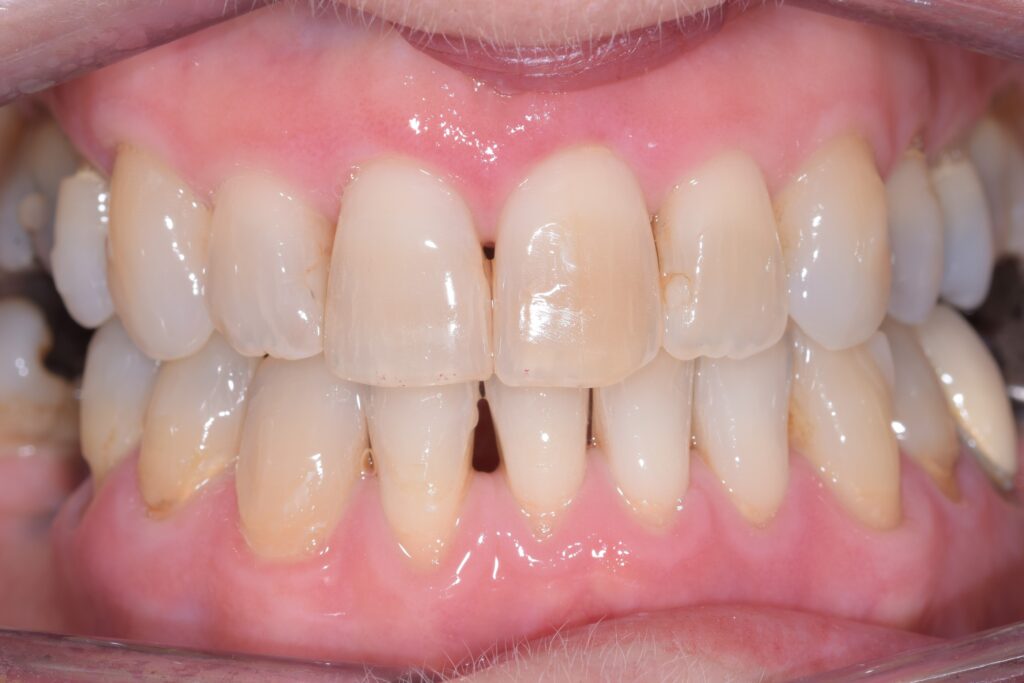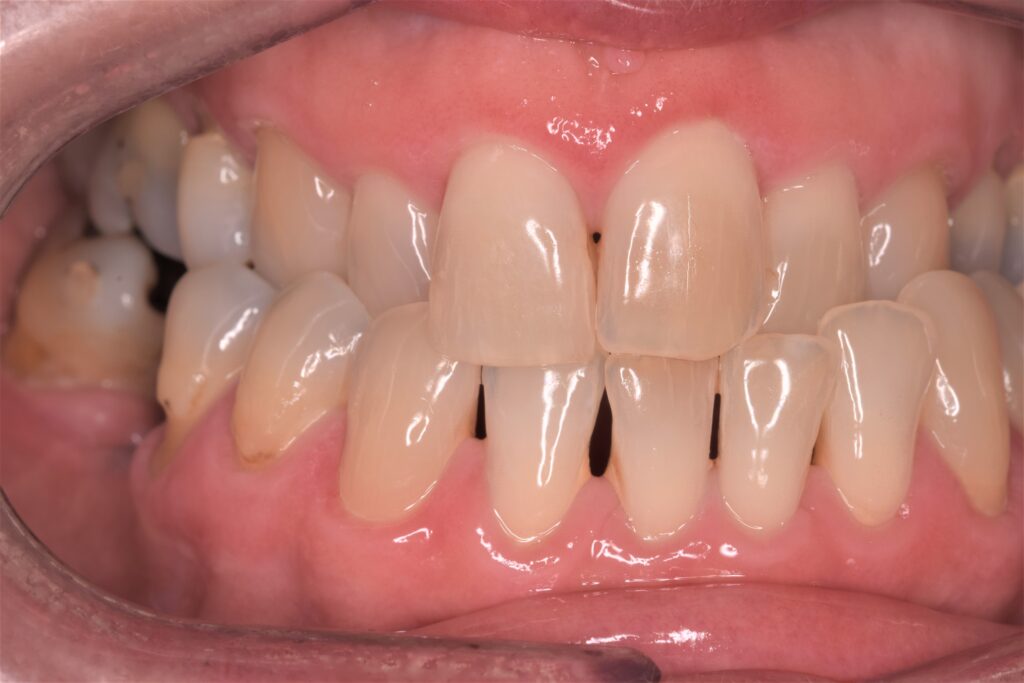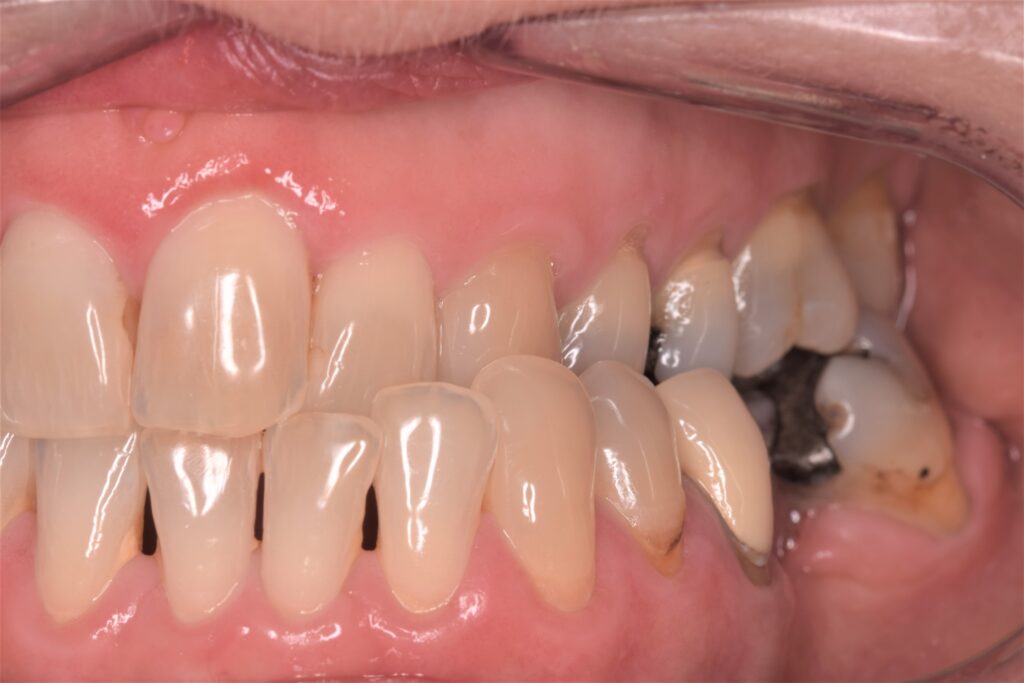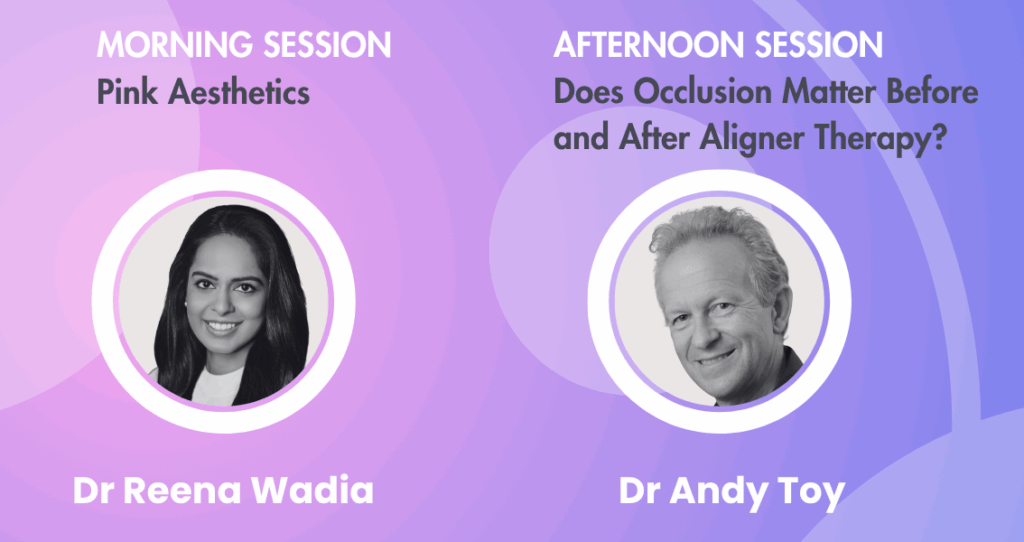The latest issue of the Primary Dental Journal, ‘Oral medicine’, is now available to read online.
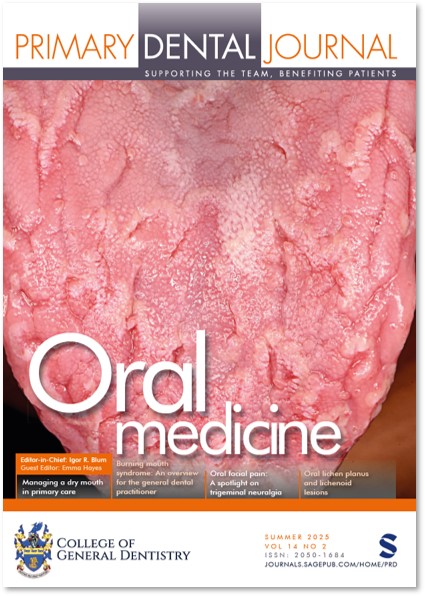
The papers in this issue of the PDJ have been brought together by Guest Editor Dr Emma Hayes, a Consultant and Clinical Lead in Oral Medicine at King’s College London Dental Institute.
A core theme in this collection of papers is to highlight the vital role that dental professionals contribute to the diagnosis and management of patients with oral medicine conditions. The issue covers the wide range of oral medicine conditions seen at various ages and stages of life, from an overview of conditions seen in the paediatric population, to salivary gland hypofunction, more often seen in an older population.
As well as common oral medicine conditions frequently encountered in dental practice, this issue of the PDJ also highlights some of the rarer conditions that may initially be presented to dentists (such as trigeminal neuralgia) and where early diagnosis is essential to improving patient outcomes. A full list of papers is below.
Dr Hayes describes the ambition for this Oral medicine issue of the journal:
“It is my hope that these papers will act as a useful reference for dental professionals into the future. I also hope that it will inspire primary dental care practitioners to continue to take an interest in oral medicine and feel empowered to participate in the early identification and management of these patients.”
This issue also marks the first where the College’s new Coat of Arms appears throughout, in light of its newly-acquired Grant of Arms received under Crown authority from the College of Arms. An image of the elaborate Grant of Arms can be seen on the inside front cover of the print edition. The News & Perspectives section of this issue examines the Grant of Arms, the symbolism behind the heraldic elements in the Coat of Arms, and how to donate to the College’s Coat of Arms fund for those wishing to secure a special place in the history of the development of the College.
Full online access to the majority of articles in this and previous issues is reserved for College of General Dentistry members and Primary Dental Journal subscribers, who can expect their printed copies to arrive by the end of September. New joiners wishing to receive a copy of this issue can let us know by emailing contact@cgdent.uk
For non-members / non-subscribers, at least one paper in each issue is made available online free of charge, with all other articles available to purchase via the links below.
An annual print subscription to the PDJ is included with membership of the College, which also includes online access to over 1,500 current and past articles in the PDJ Library and a range of other benefits.
On behalf of the College, the PDJ editorial team would like to express its gratitude to all the authors and peer reviewers who have contributed to this issue.
ISSUE CONTENTS:
- Oral medicine: An overview and update for general dental practice by PDJ Editor-in-Chief, Igor R. Blum, Editor-in-Chief
- Oral medicine by issue Guest Editor Emma Hayes
- President’s update by Roshni Karia
- Our Mission and Vision for Dentistry, College of General Dentistry
- Research Abstracts: Oral medicine by Ario Santini
- A guide to the diagnosis and management of oral candidosis for Dental Professionals by Kate Husband, Emma Hayes
- Oral lichen planus and lichenoid lesions by Ladan Mokhlesi, Emma Hayes
- Managing a dry mouth in primary care by Emma Hayes, Soniya Singarayer
- A review of common oral medicine conditions in children by Jasmine Cachia Mintoff, Maalini Patel, Emma Hayes
- Book Review of ‘A Clinical Guide to Advanced Minimum Intervention Restorative Dentistry’, reviewed by Christopher Tredwin
- Oral Facial Pain: A spotlight on Trigeminal Neuralgia and its variants for the primary care dental team by Priya Thakrar, Krupali Patel, Joanna M. Zakrzewska
- Burning mouth syndrome: An overview for the General Dental Practitioner by Yashoda Jagatiya, J.A.G. Buchanan
- Oral graft versus host disease: a guide for the primary care dental team by Krupali Patel, Priya Thakrar, Martina Shephard
CGDent members can view full articles by logging in via the yellow button below, then clicking ‘Access the PDJ Library’:
The next issue of the journal, on the topic of Leadership, is due out in Autumn 2025.

